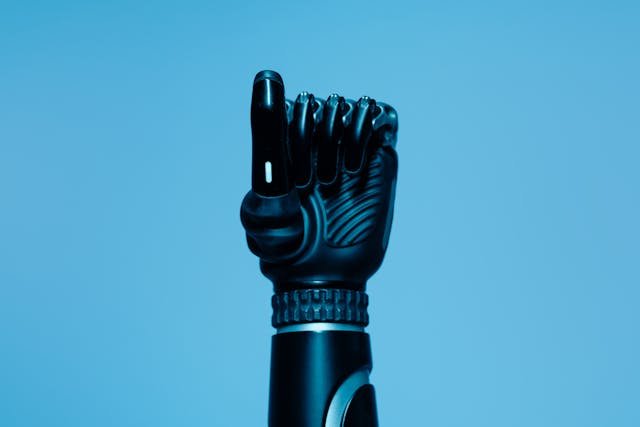Losing a limb, whether through injury, illness, or congenital conditions, can significantly impact daily life. However, modern prosthetic technology has made it possible for individuals to regain function, mobility, and independence. When it comes to upper-limb prosthetics, two common types are trans-radial and wrist disarticulation prosthetics. While both serve similar purposes, their differences lie in fit, function, and overall usability.
Understanding these differences is essential when choosing the right prosthetic solution. The right fit can improve comfort, control, and efficiency, making everyday activities easier. In this article, we’ll explore how trans-radial and wrist disarticulation prosthetics work, their benefits, and which one may be best suited for different needs.
Understanding the Levels of Limb Loss
The type of prosthetic a person needs depends on where the amputation occurs. Each level of limb loss affects mobility and the available range of motion.
What is a Trans-Radial Amputation?
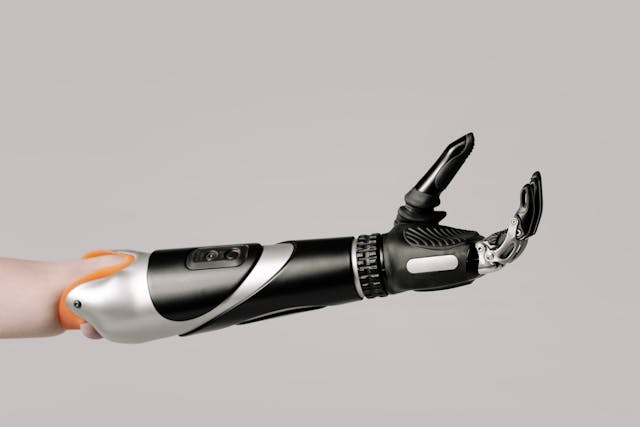
A trans-radial amputation occurs below the elbow but above the wrist. This means that a portion of the forearm is missing while the elbow remains intact. Since the elbow joint is preserved, the user retains a significant range of motion, allowing for natural arm movement.
Individuals with trans-radial prosthetics rely on their remaining forearm muscles to control their prosthetic limb. The prosthetic attaches to the residual limb through a custom-fitted socket, which provides stability and comfort. Depending on the type of prosthetic, users can operate the hand using body-powered cables, myoelectric sensors, or a hybrid system combining both technologies.
Since part of the forearm is missing, trans-radial prosthetic users may require additional support and adjustments to ensure proper balance and function. Advanced designs incorporate wrist rotation and grip variations, allowing users to perform complex tasks with greater ease.
What is a Wrist Disarticulation Amputation?
A wrist disarticulation amputation occurs at the wrist joint, where the hand is removed but the entire forearm remains intact. Unlike trans-radial amputations, this level of limb loss retains the full length of the forearm, which provides a natural shape and more leverage when using a prosthetic.
Because the forearm muscles and a longer limb length are available, wrist disarticulation prosthetic users often experience improved control over their prosthetic limb. The socket fits securely over the forearm, allowing for a comfortable and stable attachment. Users with wrist disarticulation amputations may find it easier to adapt to prosthetic use because they have more surface area for sensory feedback and weight distribution.
The presence of the full forearm also allows for better suspension techniques, meaning the prosthetic stays in place more naturally. Some wrist disarticulation prosthetics come with advanced features such as wrist flexion, rotation, and multi-grip hands, enhancing the user’s ability to perform precise tasks.
Key Differences Between the Two Amputation Levels
While both trans-radial and wrist disarticulation prosthetics restore hand function, they differ in fit, comfort, and usability. A wrist disarticulation prosthetic benefits from a longer forearm, which provides better control and stability, while a trans-radial prosthetic requires more support due to the shorter residual limb.
Choosing between these two depends on factors like comfort, personal preferences, and functional needs. Consulting with a prosthetist ensures that the prosthetic design matches the user’s lifestyle and mobility goals.
How Prosthetics for Trans-Radial and Wrist Disarticulation Work
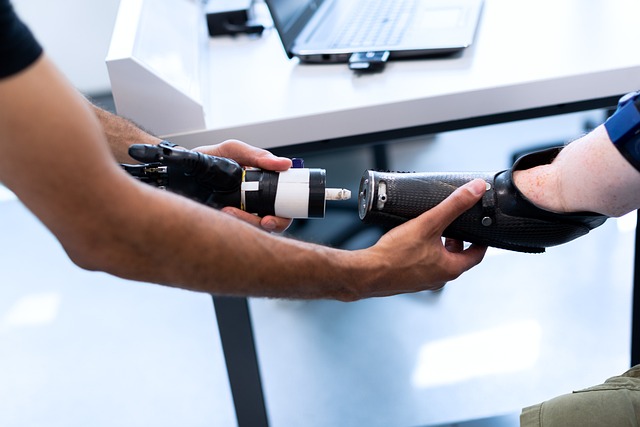
Each prosthetic type comes with different technologies and control systems, affecting how the user interacts with their artificial limb.
Body-Powered Prosthetics: Strength and Simplicity
Body-powered prosthetics use a system of cables and harnesses to control movement. When the user moves their shoulder or upper arm, the cables pull the prosthetic hand or hook into action. This system is commonly used in both trans-radial and wrist disarticulation prosthetics due to its durability and affordability.
For trans-radial users, the shorter forearm means that additional suspension techniques, such as a harness, may be needed to keep the prosthetic secure. In contrast, wrist disarticulation users benefit from the full length of their forearm, allowing for a more natural attachment with less reliance on external support.
Body-powered prosthetics are ideal for individuals who need a tough and reliable limb for manual work or outdoor activities. They provide a strong grip and good proprioceptive feedback, allowing the user to sense resistance when holding or lifting objects.
Myoelectric Prosthetics: Advanced Functionality
Myoelectric prosthetics use electrical signals from the user’s muscles to control movement. Sensors placed inside the socket detect muscle contractions and convert them into hand and wrist motions. This allows for smoother, more natural control compared to body-powered prosthetics.
For trans-radial users, myoelectric technology allows them to regain lost wrist and finger movements, even though their forearm is shorter. Some myoelectric hands come with multiple grip patterns, allowing users to adjust their grip strength and hand positioning based on different tasks.
For wrist disarticulation users, myoelectric control is even more intuitive since they have more muscle groups available for signal detection. The longer residual limb provides better stability, allowing for more precise and controlled movements.
While myoelectric prosthetics offer high functionality, they require regular charging and maintenance. They are also more expensive than body-powered options, making cost a factor when deciding on the best prosthetic solution.
Hybrid Prosthetics: Combining the Best of Both
Hybrid prosthetics integrate both body-powered and myoelectric features. Users can switch between cable-driven and muscle-controlled functions, depending on their needs. This combination provides greater versatility, allowing for both strength-based tasks and delicate, precise movements.
Hybrid prosthetics work well for both trans-radial and wrist disarticulation users, offering flexibility in movement and adaptability for different activities. They are an excellent choice for individuals who require a balance of durability and advanced control.
Choosing the Right Prosthetic for Your Needs
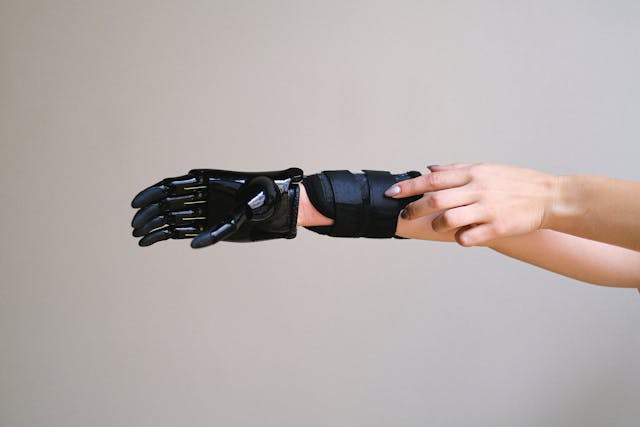
Selecting the best prosthetic depends on lifestyle, comfort, and long-term usability. Each type has its own advantages, and working with a prosthetist helps ensure the best fit.
Factors to Consider
For trans-radial users, the choice of prosthetic often depends on the need for additional wrist functionality. Since part of the forearm is missing, a prosthetic with built-in wrist rotation can provide greater mobility. Ensuring a secure socket fit is also crucial, as a shorter limb requires a stable suspension system.
For wrist disarticulation users, the longer residual limb provides an advantage in control and comfort. Since more of the natural forearm remains, suspension is easier, and users can benefit from more precise prosthetic movements. Aesthetic concerns may also be considered, as wrist disarticulation prosthetics provide a more natural arm shape.
The Importance of Rehabilitation and Training
Adapting to a prosthetic takes time and practice. Rehabilitation plays a key role in helping users strengthen their remaining muscles, improve coordination, and gain confidence in using their prosthetic. Whether using a body-powered or myoelectric system, training helps users integrate their prosthetic into daily life.
At Robobionics, we emphasize the importance of gamified rehabilitation, making the learning process engaging and effective. By using interactive exercises and personalized training programs, users can adapt more quickly and comfortably to their prosthetic limbs.
Ensuring a Proper Fit for Long-Term Comfort
A well-fitted prosthetic makes all the difference in daily use. Regular adjustments may be needed as the residual limb changes over time. Socket modifications, suspension adjustments, and grip refinements ensure long-term comfort and efficiency.
The Future of Trans-Radial and Wrist Disarticulation Prosthetics
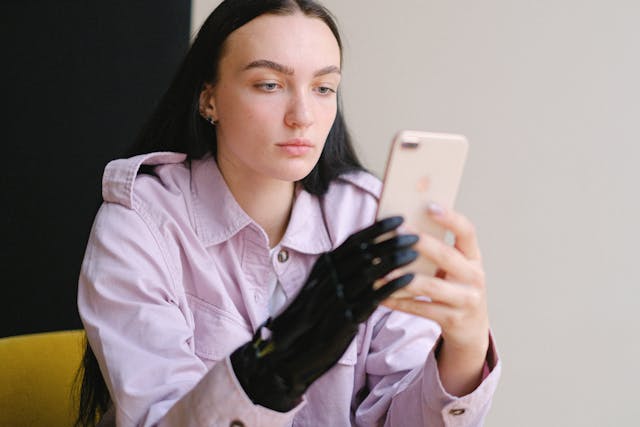
The world of prosthetic technology is rapidly evolving, with new advancements aimed at improving comfort, functionality, and accessibility. For individuals using trans-radial and wrist disarticulation prosthetics, the future promises even more intuitive and natural-feeling artificial limbs. From brain-controlled prosthetics to self-adjusting sockets, the next generation of prosthetics is set to transform the lives of users in remarkable ways.
Neural-Controlled Prosthetics: The Power of Thought
One of the most groundbreaking developments in prosthetic technology is the integration of brain-machine interfaces (BMIs). Researchers are working on prosthetic limbs that can be controlled directly by neural signals, eliminating the need for muscle contractions or external switches.
Unlike myoelectric prosthetics that rely on muscle activity in the residual limb, neural-controlled prosthetics read signals directly from the brain, allowing for smoother, more natural movement. This technology enables users to control their prosthetic hands and fingers with minimal effort, improving response time and precision.
For trans-radial and wrist disarticulation users, this means a future where prosthetic hands can move as seamlessly as a natural limb. While this technology is still in early development, clinical trials have shown promising results, paving the way for fully integrated mind-controlled prosthetics.
Smart Prosthetics with AI and Machine Learning
Artificial intelligence (AI) is revolutionizing prosthetic functionality by making devices more adaptive and responsive. AI-powered prosthetic hands can learn from a user’s movement patterns, gradually improving grip strength, motion accuracy, and overall responsiveness.
For example, AI-enabled prosthetic hands can automatically switch between grip modes based on the object being held. If a user picks up a fragile item, the prosthetic will apply just enough pressure to hold it without crushing it. This level of precision allows for a more intuitive and user-friendly experience.
Moreover, machine learning algorithms can help prosthetic devices adapt to individual users’ preferences over time. Instead of manually selecting grip patterns, users can rely on their prosthetic limb to anticipate their needs based on past interactions.
Enhanced Comfort and Fit with Smart Materials
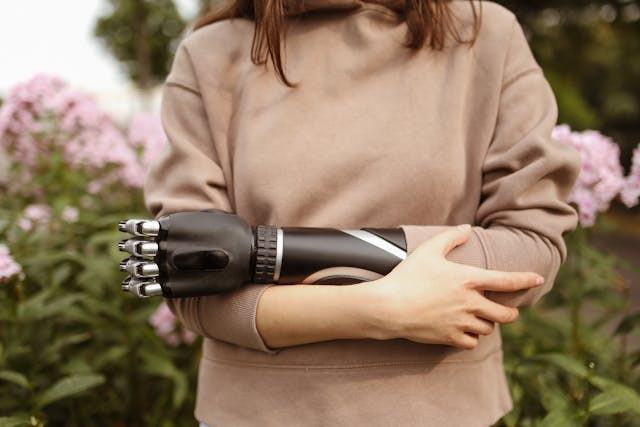
A common challenge for prosthetic users is socket discomfort. Traditional sockets can sometimes cause pressure points, skin irritation, or discomfort due to poor weight distribution. However, new advancements in smart materials are addressing these issues.
Future prosthetic sockets will incorporate self-adjusting materials that adapt to changes in limb size and pressure throughout the day. These materials use temperature-sensitive or air-filled systems to expand or contract as needed, ensuring a more secure and comfortable fit.
Additionally, 3D printing technology is making it possible to create fully customized prosthetic sockets tailored to an individual’s exact measurements. This ensures a perfect fit from day one, reducing the need for frequent adjustments and increasing overall user satisfaction.
Overcoming Challenges in Prosthetic Adaptation
While advancements in trans-radial and wrist disarticulation prosthetics continue to improve functionality, users still face challenges in adapting to and fully integrating these devices into their daily lives. From physical adjustments to psychological resilience, overcoming these challenges is essential for long-term success with a prosthetic limb.
Physical Adaptation: Building Strength and Coordination
One of the biggest challenges for new prosthetic users is learning how to control their artificial limb effectively. Whether using a body-powered, myoelectric, or hybrid prosthetic, the process requires time, patience, and consistent practice.
For trans-radial users, adjusting to wrist movement limitations is an important part of adaptation. Since part of the forearm is missing, prosthetic users often rely on compensatory movements from the elbow and shoulder. Training exercises help improve coordination, ensuring smoother and more natural movement.
For wrist disarticulation users, the challenge is often in developing precise control over fine motor tasks. Since they retain the full length of their forearm, they may have an easier time generating signals for myoelectric control. However, mastering different grip patterns and learning to switch between them efficiently requires regular practice.
At Robobionics, we provide rehabilitation support and training programs to help users build confidence and develop the necessary skills to integrate their prosthetic limb into everyday activities.
Psychological Adjustment: Building Confidence and Identity

The emotional impact of limb loss and prosthetic adaptation can be just as significant as the physical adjustment. Many users experience a period of psychological adaptation as they navigate self-image, confidence, and public perception.
Some users initially feel self-conscious about wearing a prosthetic, particularly in social settings. Concerns about how others perceive them or how they will adjust to daily life can create anxiety. However, with time and support, most prosthetic users find empowerment in their new limb, embracing it as an extension of themselves rather than a limitation.
One way users regain confidence is by customizing their prosthetic to reflect their personality and style. From sleek, high-tech designs to artistic, colorful covers, prosthetic limbs can be a statement of individuality. Many users take pride in their prosthetics, viewing them as a unique part of their identity rather than something to hide.
Support groups, therapy, and connecting with other prosthetic users can also be invaluable. Sharing experiences with people who have gone through similar journeys helps normalize the process and reinforces the idea that prosthetic use is not about loss but about regaining freedom and independence.
Daily Integration: Making Prosthetics a Natural Part of Life
Successfully incorporating a prosthetic limb into daily life requires practical adjustments. Users must learn how to perform everyday tasks like eating, writing, or dressing using their new limb. Initially, even simple activities may feel awkward, but with practice, they become second nature.
For individuals using advanced myoelectric prosthetics, learning to use different grip patterns for various tasks is crucial. Understanding when to use a power grip for lifting heavy objects versus a precision grip for picking up small items can make daily life easier.
Wrist disarticulation users may have an easier time adjusting due to the natural leverage of their full forearm. However, they must still practice movements and ensure their prosthetic remains comfortable throughout the day. Regular maintenance and minor adjustments to the socket and suspension system help prevent discomfort and improve long-term wearability.
At Robobionics, we ensure that users receive hands-on training and guidance, helping them smoothly transition into a lifestyle where their prosthetic feels like a natural part of their body.
Conclusion
Trans-radial and wrist disarticulation prosthetics both offer individuals the chance to regain hand function and independence. While each has its own advantages, the choice depends on comfort, control, and lifestyle needs. Consulting with a prosthetist ensures the best fit and function for each individual’s situation.
At Robobionics, we are committed to providing high-quality, customized prosthetic solutions. If you are exploring prosthetic options, schedule a free consultation with us today and take the first step toward restoring mobility and confidence.



